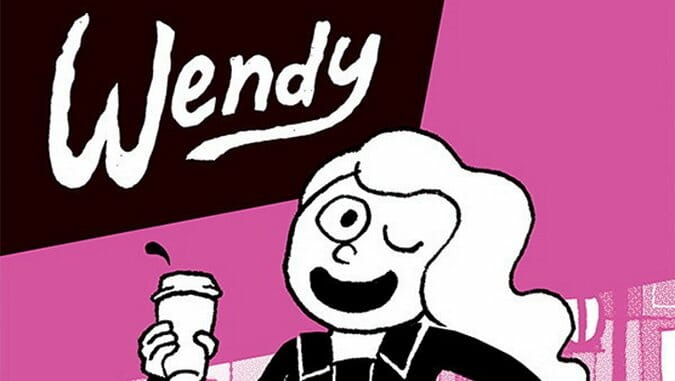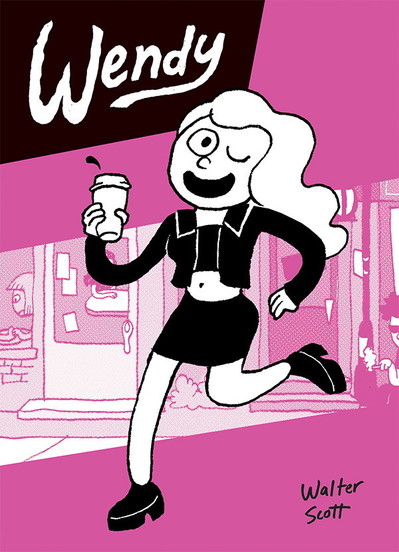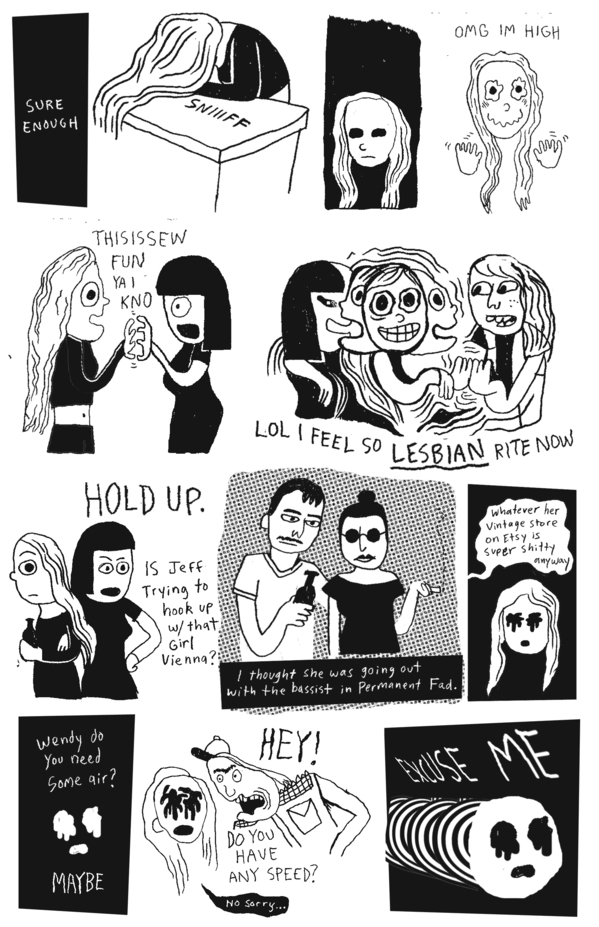Wendy by Walter Scott

Writer & Artist: Walter Scott
Publisher: Koyama
Release Date: November 8, 2014
Previously published in Penguin Random House Canada’s online mag, Hazlitt, Walter Scott’s Wendy comics present a sort-of field guide to Millennial scenesters. Crudely drawn with shading that calls to mind early versions of MacPaint, the strip’s happenings are no less rough and dirty. The titular Wendy makes art of some sort or another (Scott elects to leave it vague). She bums around a city that seems to be Montreal, which is unsurprisingly where Scott began work on the character. Wendy parties hard, makes regrettable decisions, spends plenty of time in bed eating pizza and watching Netflix and swings between wild ambition and destructive cluelessness. In other words, she is young and, therefore, at the point in her life where she does and can make many mistakes.
The primitive quality of Scott’s art and his slang-and-abbreviation-peppered dialogue can be offputting, but there’s an immediacy to both approaches that makes them read as genuine. If Wendy feels like anything specific, it’s the early-90s zine culture that produced comics like LMNOP/babysue, a deliberately rude strip designed to annoy everyone who read it. That said, Scott clearly holds some sympathies with his character. Wendy may be aggravating in her poor decisions and superficiality, but Scott aptly captures the youthful sensation of bottomless despair that fades as one ages and experiences more.
And though the narrative may seem obsessed with the frivolous present and little else, Wendy’s smarter and more focused, as quotations from author Kathy Acker and artist Skeena Reece suggest. Acker in particular had strong affinities for punk in her writing, stripping it down and using vulgarity to provoke her audience. (An early example: “Is sensuality less valuable than rational thought? Is there a split between mind and body, or rather between these two types of mentality? Why’s a Cubist painting, if it is, better art than a Vivienne Westwood dress? Is our city abstract?”) Scott is clearly doing something similar, but his work is more relatable and direct.



